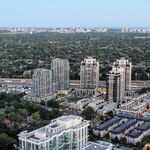scarberiankhatru
Senior Member
Take a longer look at those cars with one person inside.
While you weren't looking, he majority of them began their daily journey with several passengers.
But after Mom drops off the husband at the train/subway/bus stop, and drops off their 2.3 kids at one or more schools, daycare or the babysitter, and drops off grandma at the senior centre, then she gets to complete her journey creeping along in bumper-to-bumper traffic, burning scarce fuel and emitting needless CO2, while the occasional vacationer zips past in an otherwise under-utilized "carpool" lane.
If you and all your neighbours work at the same plant, fine. But carpooling is hardly a practical solution outside of the company-built subdivisions of the '50s and '60s.
While some of those cars dropped a passenger off at a transit stop, most did not carry the entire household when they left the driveway and the situation you described is clearly in the minority. Average household size is nowhere near 5.3 people and the odds that a household with 5+ people has only one car is also rather small. Don't forget to throw in decent transit usage even in the suburban fringe and most of the 905, increasing part-time and non-9to5 work, more working from home, etc.




